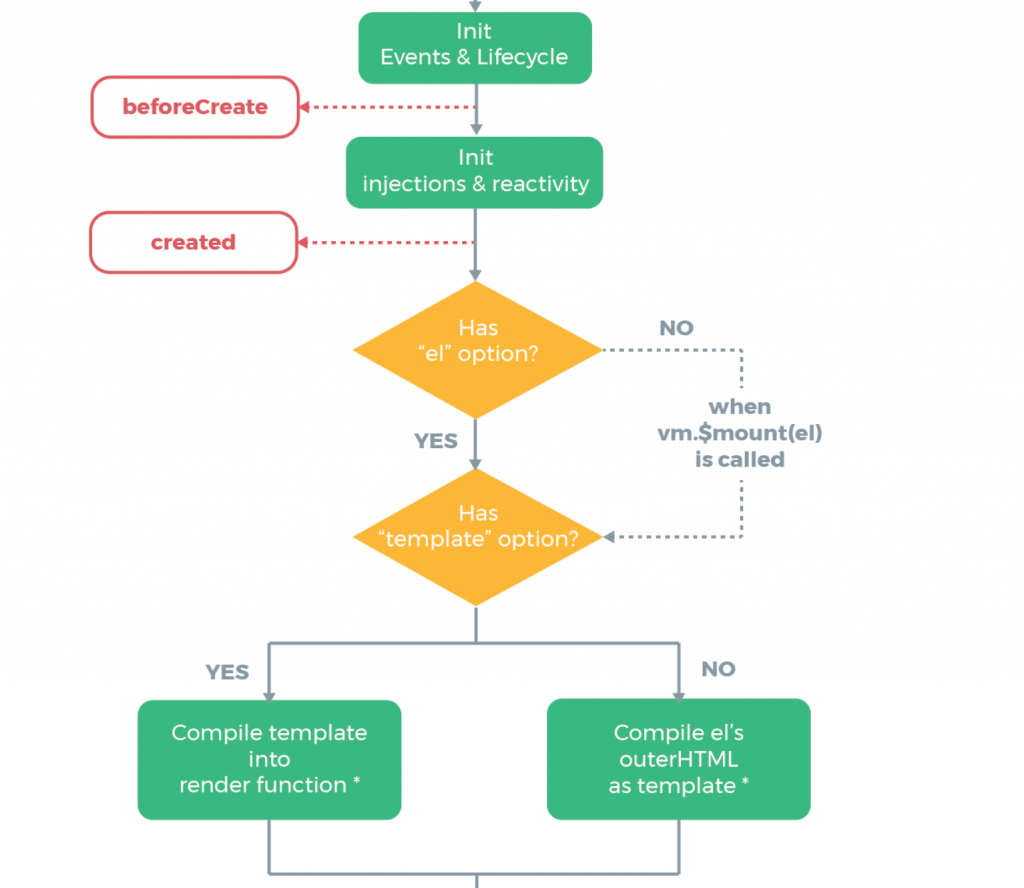參考資料
- 五倍紅寶石課程
- 官網插槽介紹
前言
在介紹slot之前,我們必須先瞭解一個觀念:編譯作用域
我們先來看個範例
codepen連結
1 | <div id="app"> |
猜猜看,child元件中是否會印出父層的msg:I'mparent內容?
答案是不會的!原因是目前child所處的位置是父層作用域,當然不會印出子層內容~
補充:在Vue生命週期中,Vue會在created階段時判斷是否有template,如果有vue則會去編譯template內容,也因此,child元件不會顯示I’mparent內容
圖示結果:
小結論:
1.父層作用域在父層編譯
2.子層作用域在子層編譯
若要突破作用域編譯問題,就要使用到slot
Slot簡介
參考資料:Summer 夏天Vue.js: Slot
突破作用域,將父層內容傳遞進來!通常會應用在如果內容不一定要放入component中時,可以透過slot傳遞一整個html結構進來。
Slot 是一種用於內容分配(Content Distribution / Transclusion)的元件,適用於複雜或巢狀元件的實作上,可以想像成是空間預留的方法,在迭代過程中再把內容塞進去。
卡斯伯老師在課堂上將slot分為三種:
1.沒有slot的狀態
1 | <no-slot-component> |
說明:即使寫p段落文字在子元件中,在html上依舊不會顯示。因為元件中的內容都會被模板替換掉。這就是上方提到作用域編譯的問題~
2.單組slot
特點:在模板中添加<slot><slot/>
HTML部分
1 | <single-slot-component> |
template部分
1 | <script type="text/x-template" id="singleSlotComponent"> |
畫面上,就可以將<p>使用這段取代原本的 Slot。</p>呈現在畫面上!如下
3.多組slot(具名插槽)
簡單來說,將內容放入指定位置
寫法:
1.在html加入slot
2.在元件模板插入 name
練習連結
HTML部分
1 | <child> |
補充:html結構中若不想顯示標籤如a、header,可以使用
<template>,這樣就不會顯示標籤摟~
練習一下
猜猜看下面這個範例child元件,會印出什麼內容?
練習連結
HTML部分
1 | <div id="app"> |
JavaSvript部分
1 | // children component |
答案是:
原因:之所以child中的msg會印出I'm parent字樣,就是因為child所在區域,還是在父層。因此編譯作用域還是在父層內。
後記
在2.6.0中,我們為具名插槽和作用域插槽引入了一個新的統一的語法(即v-slot指令)。它取代了slot和slot-scope